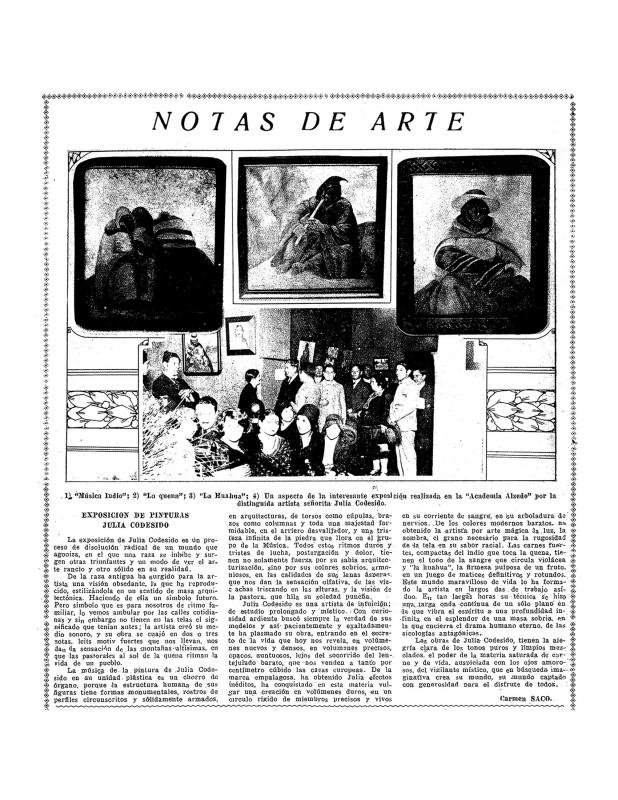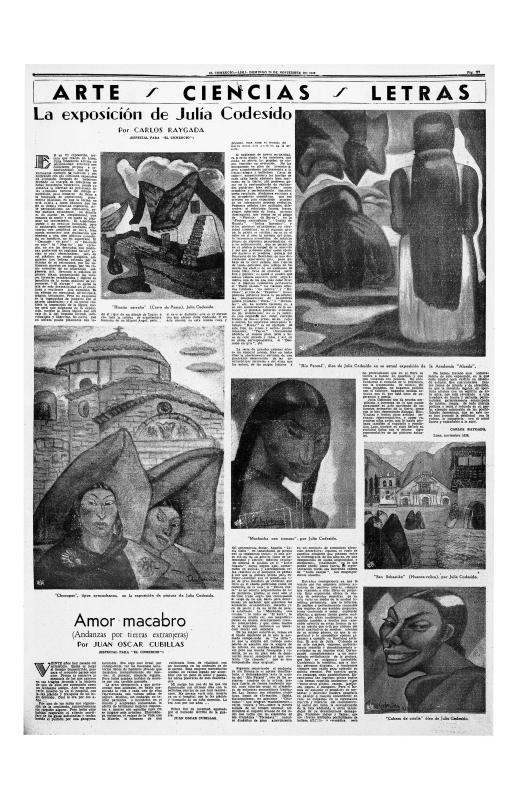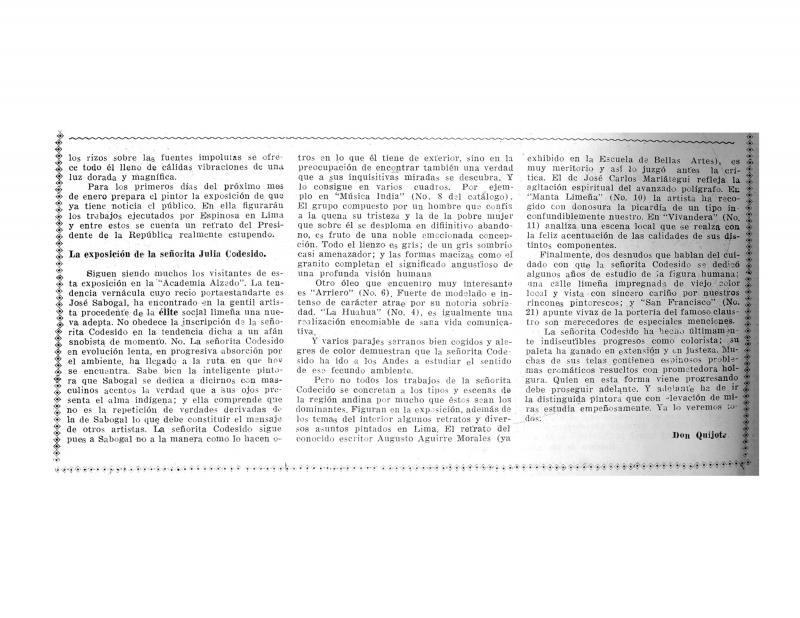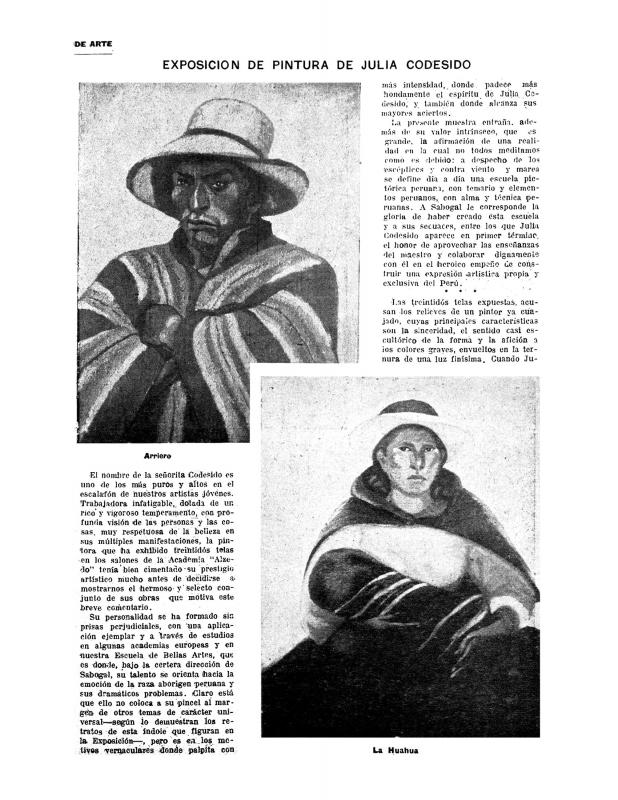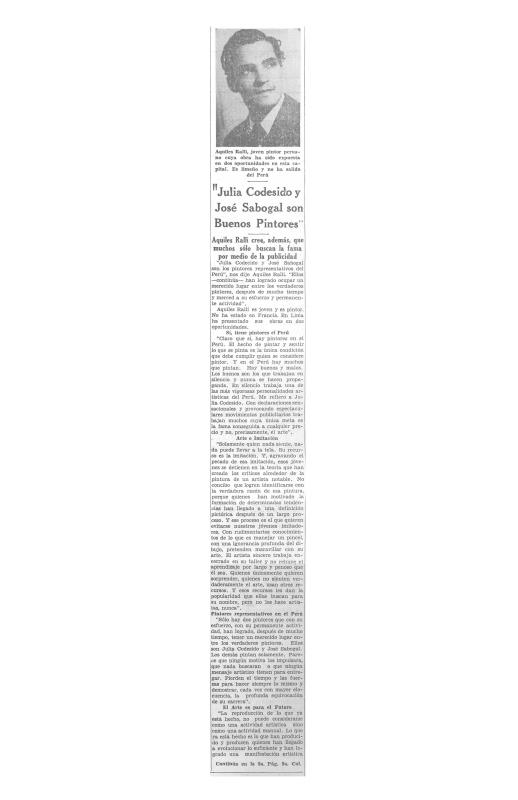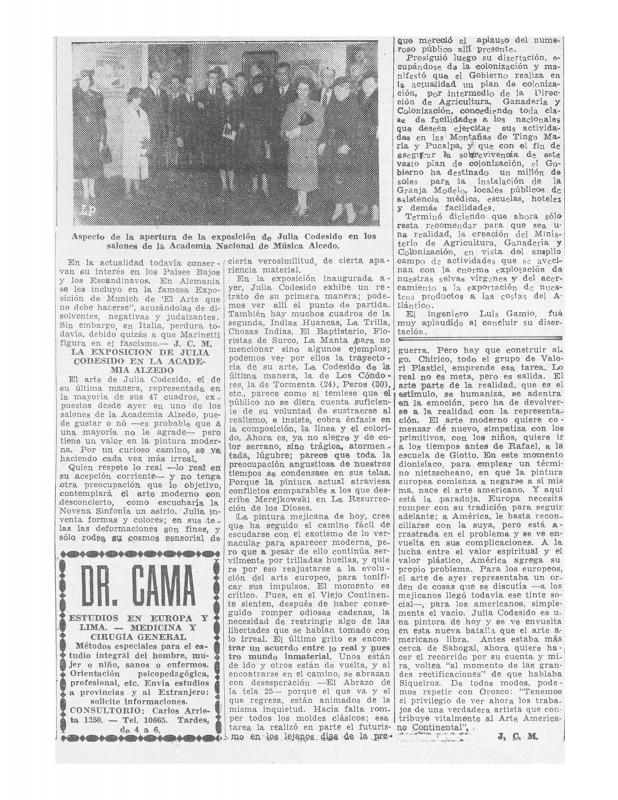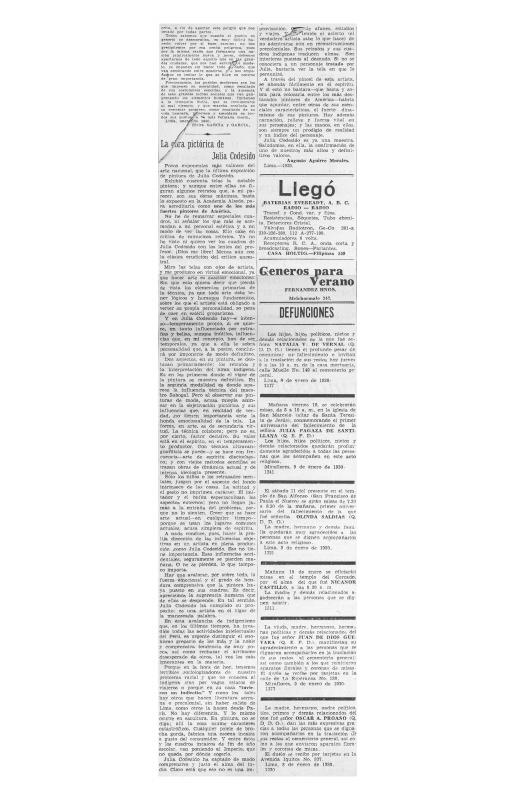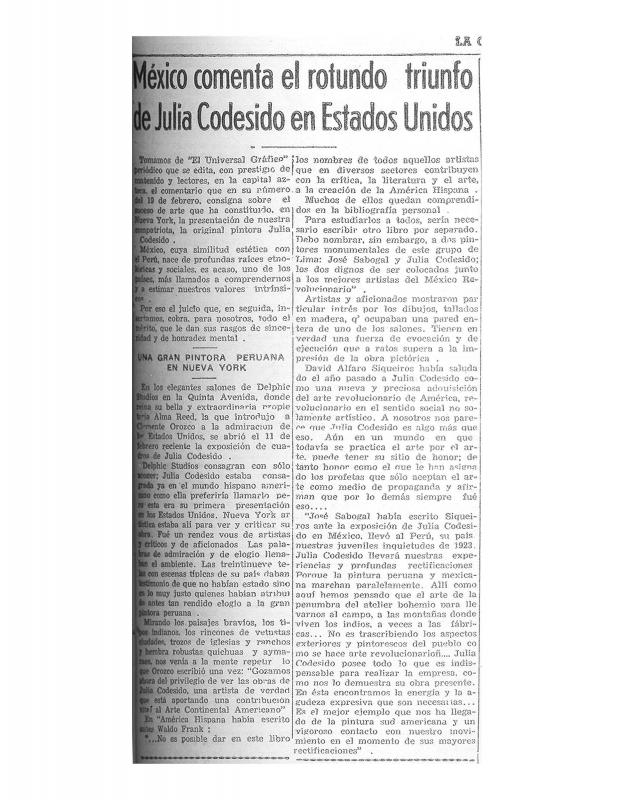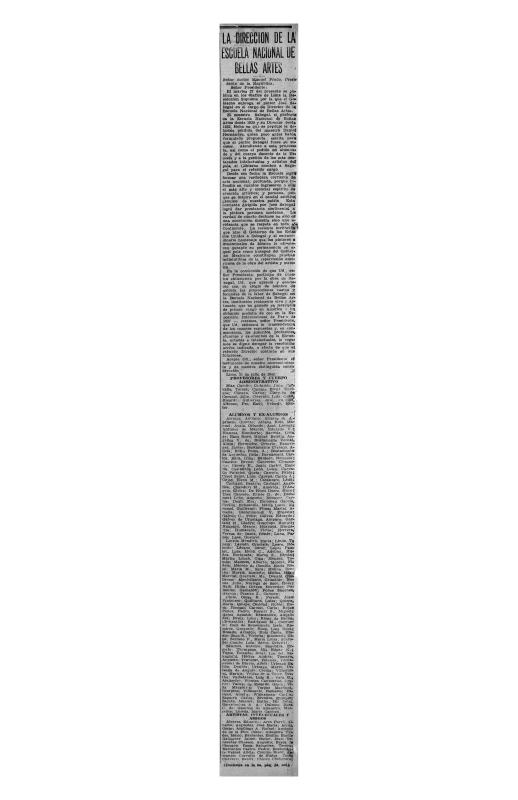Indigenist painting flourished in Peru from the 1920s to the 1940s as part of a broader movement that sought to redefine Peruvian identity in terms of indigenous elements. Although at some points it was entirely focused on the “indigenous” story and the Inca past that was considered to have been glorious, it also championed a mestizo identity portrayed as a result of the integration of “native” and “Hispanic” cultures. The main ideologue and unchallenged leader of the Indigenist movement in the visual arts was José Sabogal (1888–1956), whose profound interpretation of the concept of “being rooted” was deeply influenced by regional art movements in Spain (exemplified by Ignacio Zuloaga [1870–1945], among others) and in Argentina (Jorge Bermúdez [1883–1926], to mention just one); Sabogal spent a great deal of time in these countries during his formative years. When he returned to Peru in late 1918 he settled in Cuzco, where he produced about forty oil paintings of people and scenes of the city; these works were subsequently shown in Lima (1919) at an exhibition that is considered the formal beginning of Indigenist painting in Peru. Sabogal’s second one-man show, at the Casino Español (1921), established his reputation. He joined the faculty at the new Escuela Nacional de Bellas Artes in 1920, where he was eventually appointed director (1932–43). There he trained a group of painters who joined the Indigenist movement, such as Julia Codesido, Alicia Bustamante (1905–68), Teresa Carvallo (1895–1988), Enrique Camino Brent (1909–60), and Camilo Blas (1903–85). Unlike her companions, Julia Codesido embraced Indigenism as her point of departure on a journey of personal growth that took her—in her later years—to the very threshold of abstraction, combining a “visual discovery of the country with the inexorable influx of modernity” [Wuffarden, Luis Eduardo. Julia Codesido (1938–1979): muestra antológica. (Lima: CCPUCP, 2004)]. Her choices can be explained by her family’s migration to Europe in the early twentieth century, where she witnessed the evolution of the artistic avant-garde. Back in Lima she first took classes at the painter Teófilo Castillo’s studio, and then attended the Escuela Nacional de Bellas Artes once it opened in 1919. When she had her first exhibition at the Academia Nacional de Música Alcedo (Lima, 1929) she was described as an artist with a “vernacular tendency.” But she already stood out because of her artistic nature and her ability to use color and design in her expressive style. In 1931 she became a professor at ENBA, but when she presented her second solo show based on paintings of much greater complexity, her artistic ambition prompted her to quit academia. Despite her interest in the living culture of Peru, her style does not quite fit in an ethnographic category. In 1935, as one of the first artists to have an exhibition at the opening of the Palacio de Bellas Artes in Mexico City, she took her place on the international stage. The acknowledgement her painting received from Mexican muralists opened doors to the North American market, where she exhibited at the Delphic Studios gallery in New York (1936) and the Museum of Modern Art in San Francisco (1937). [As complementary reading on Julia Codesido, see the following articles in the ICAA digital archive: by Carmen Saco “Disciplina y sentido cósmico en los cuadros de Julia Codesido” (doc. no. 1136583) and “Notas de arte: Exposición de pinturas Julia Codesido” (doc. no. 1136647); by Juan Puppo “El arte moderno de Julia Codesido” (doc. no. 1136567); by Carlos Raygada “La exposición de Julia Codesido” (doc. no. 1141261); by Raúl María Pereira “La exposición de Julia Codesido” (doc. no. 1141245); by Carlos Solari (under the pseudonym “Don Quijote”) “La exposición de la señorita Julia Codesido” (doc. no. 1147891); by Clodoaldo López Merino (under the pseudonym “EGO”) “Exposición de pintura de Julia Codesido” (doc. no. 1147874); by Aquiles Ralli “Julia Codesido y Sabogal son buenos pintores” (doc. no. 1150882); by J. C. M. “La exposición de Julia Codesido en la Academia Alzedo [sic]” (doc. no. 1141179); by Augusto Aguirre Morales “La obra pictórica de Julia Codesido” (doc. no. 1141196); and (anonymous) “México comenta el rotundo triunfo de Julia Codesido en Estados Unidos” (doc. no. 1141164). See also the letter written by the faculty and students of the Escuela Nacional de Bellas Artes to then-president of Peru Manuel Prado Ugarteche, asking that José Sabogal be reinstated as director of the school, cosigned by Codesido (doc. no. 1140784)].


